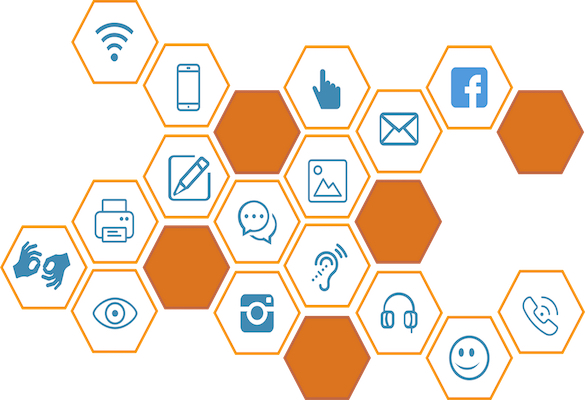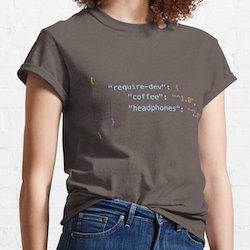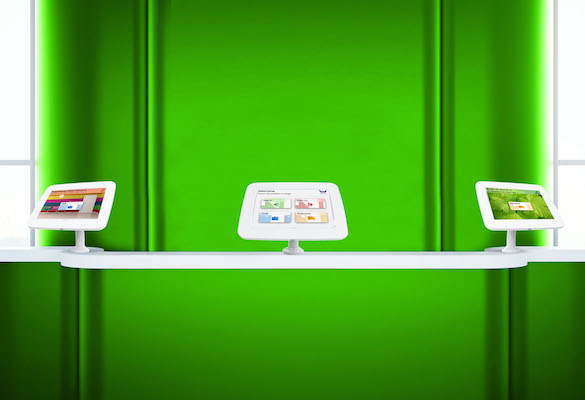Introduction
Accessibility is essential for kiosk software developers, kiosk manufacturers and kiosk owning organisations who wish to make high quality solutions without excluding portions of society. In the UK 1 in 5 people have a disability. This is a huge number of people and a very significant section of the population. However whilst accessibility is essential for these users it has far reaching benefits for everyone in society.
The concept of accessibility is not simply about catering for an all too often ignored section of society. It is about catering for all people. People's needs, whether they have a disability or not, change based on a number of factors. Someone's ability to use technology can be affected by where they are, temporary health issues they are currently experiencing and what equipment they are using. For example they may be somewhere particularly noisy, they may have broken an arm or be accessing a service on their phone or via a poor internet connection.
Our goal should be to make sure nobody is excluded.
In this article we'll take a quick look at some innovations that were driven by accessibility concerns and have resulted in better products, tools and services for everyone. As kiosk software developers, kiosk manufacturers and kiosk owners we can look at these innovations, their applications and benefits and incorporate them into our projects and products.
Apple
Apple are widely considered to have been at the forefront of accessibility innovation throughout their existence. A good example of their work is VoiceOver.
Screen Readers for Touch Screens
In the infancy of the iPhone, Apple considered what effects a touchscreen device would have on their blind and visually impaired users. Obviously traditional methods were no longer going to work on a touchscreen device. This led to significant investment to develop voice technology. The result of this investment was VoiceOver. VoiceOver was the first gesture based screen reader the world had seen. It was included as part of the unveiling of the iPad and was also available on Mac OS, iPhone and iPod touch.
Apple received recognition from the National Federation for the Blind in the US for this work. They also noted that Apple's ability to make touchscreen devices accessible to blind users demonstrated touch screens did not need to be a barrier to the blind and visually impaired.
Innovations like this one by Apple have contributed enormously to the development of voice activated gadgets that many of us have in our homes and offices today. Regardless of ability millions of us use these gadgets every day.
Google has long invested in accessibility. A number of innovations driven by accessibility have given them an edge over their competitors and has in no small part contributed to their success.
Auto Complete
Auto-complete was originally developed to provide assistance to people with disabilities. Of course most of us now use auto-complete many times every single day to save time and effort.
Contrast Minimums
Working within pre-set parameters for contrast was done to help those with a visual impairment. It allows users with a visual impairment to more easily define elements on a screen. However there is another benefit realised from these minimums. That being that it helps all users more easily read their screens in bright light environments.
Voice Control
A great deal of research in the field of artificial intelligence was conducted to help users with visual impairments. The research was to provide visual context to these users. Today, advances in artificial intelligence are very much based on this original research. The applications for artificial intelligence are wide ranging and effect us all.
Auto Captions
Machine learning has been used for auto-captioning. Unfortunately this is yet to advance far enough to be considered fully adequate for deaf and hard of hearing users. As such more work is required and being carried out. Whilst this work continues to improve auto-captioning it is also having the benefit of improving machine learning itself. Due to the effort and investment more applications are being found for machine learning.
Web Accessibility
As a society we have been using the web now for getting on for 30 years. It has become so intertwined with modern, day-to-day existence that it is really an essential tool for us not simply a novelty we can do without. Accessibility features improve the web for all users not just those for whom those features are essential.
As kiosk software developers, kiosk manufacturers and kiosk owners we may be running web based applications on our kiosks. As such it is worth knowing about web accessibility. Examples of web accessibility include the following points.
Images
For blind and visually impaired people information contained in images is by default inaccessible. These users will be using a screen reader to get the information on the page. Screen readers rely on "alt text" to communicate the information contained in the image to the user. "Alt text" is a written description of the image within the website code.
When a developer adds alt text to their code the information is then accessible to blind and visually impaired people. If the application on your kiosk is available remotely, it also becomes available to other users who have images turned off in their browser settings. The normal reasons for this are that the user lives in an area with expensive or low bandwidth. Technologies such as search engines can also then get the information from the image.
Keyboard Input
As mentioned earlier, the addition of a keyboard to your kiosk can help accessibility. It will allow users with limited fine motor control to use your kiosk. If coded correctly by your kiosk software developer, all the functionality of your kiosk web application will be available by use of the keyboard rather than just the touchscreen.
Another benefit is that, with this in place, users who are unable to use a keyboard can then use assistive technologies such as speech input which carry out the tasks the keyboard would normally be used for.
Audio Transcripts
In the same way that information contained in images is unavailable to blind and visually impaired people, information delivered audibly is unavailable to people who are deaf or hard of hearing. To counter this it is possible for your kiosk software developer to add transcripts of audio files. Doing so will make the information accessible to these users.
Alongside this the information then also becomes available to search engines and users who are unable to hear the sound for other reasons such as being in a noisy environment. This is useful even if your kiosk application is not available remotely, if the kiosk is installed in a location that can be noisy.
The accessibility considerations above, and others, provides benefits to all users. Benefits will be experienced by the following users:
- People using devices with small screens like phones and watches
- People using smart TVs and devices with different input types
- People in bright / glaring sunlight
- People in noisy environments
- People with changing abilities caused by ageing
- People with short-term disabilities such as a broken arm or even misplaced glasses
- People in areas where connectivity is slow, limited or expensive such as those in many rural areas
Conclusion
Accessibility is important for everyone. It is essential for those with disabilities and benefits those of us who are lucky enough to not have a disability. As an industry we must do everything we can to make our kiosks and our kiosk software accessible to everyone.
In this article we've looked at a couple of household names and web accessibility as a whole. There are of course many other studies we can look at and we would encourage you to do so when considering a kiosk project. Getting accessibility right from the start is the easiest and most cost-effective way to do it. Done right it will benefit you as well as your kiosk users.







